Relays And Surveyors Around Jool
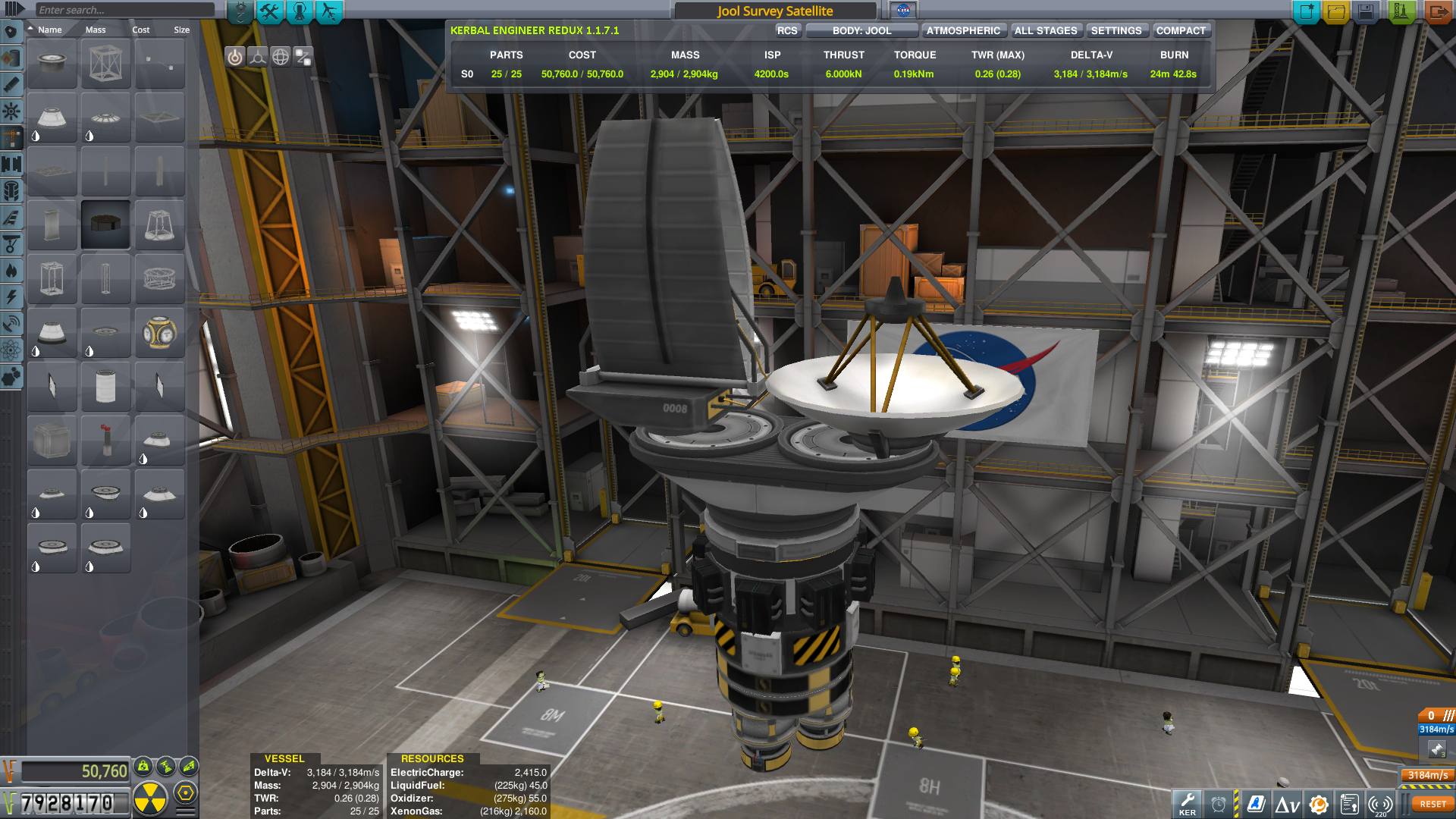
This is the first step of a rather large endeavor:
- Put in orbit of Jool a station with fuel capacity
- Land a miner on Pol, the outermost planet
- Have a refiller capable of making the trip from Pol to the station
- Optionally a craft capable of going from the station to the craft to refill
In order to do all that, we need a relay network and surveyors to analyse the ore concentration of the bodies around Jool.
The plan is to put the main craft in orbit around Jool and then deploy the 5 satellites, one for each moon (Pol, Bop, Tylo, Vall and Laythe). They wil then plan an intercept for their respective moon, circularize and put themselves in a polar orbit. The ion engines have a high Iₛₚ, meaning they’re really efficient. The satellites can then be rather light since we don’t need to add much fuel. The burn time will in return be quite long, up to 15 minutes.
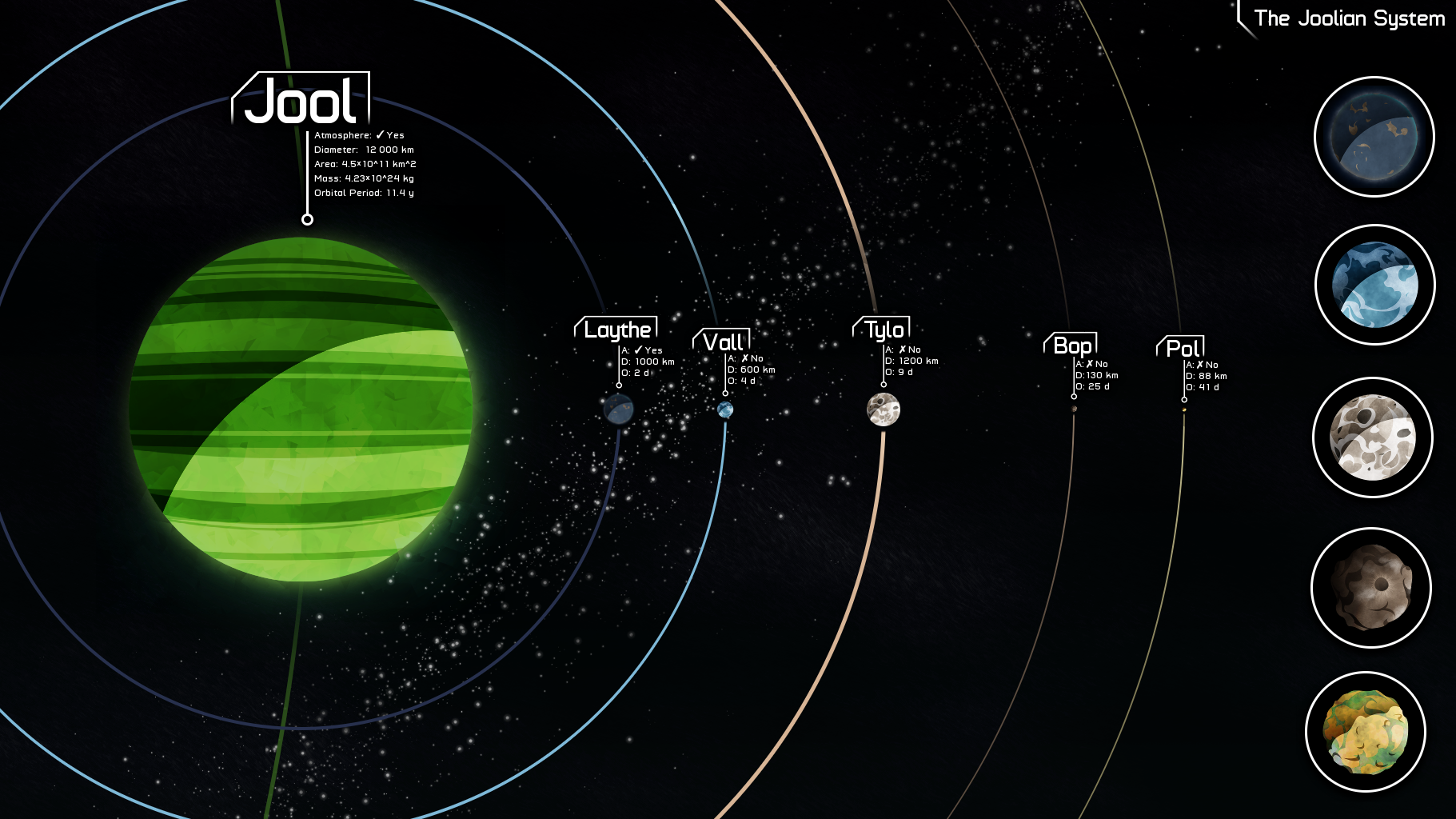
This is the Jool system. Thanks to https://www . reddit . com/r/KerbalSpaceProgram/comments/3bvymk/jool_and_its_moons/

The 5 satellites are easily enclosed in the fairing.

The payload is quite heavy and we don’t require so many boosters. The nuclear engines on the last stage will get us where we need to be with high efficiency.
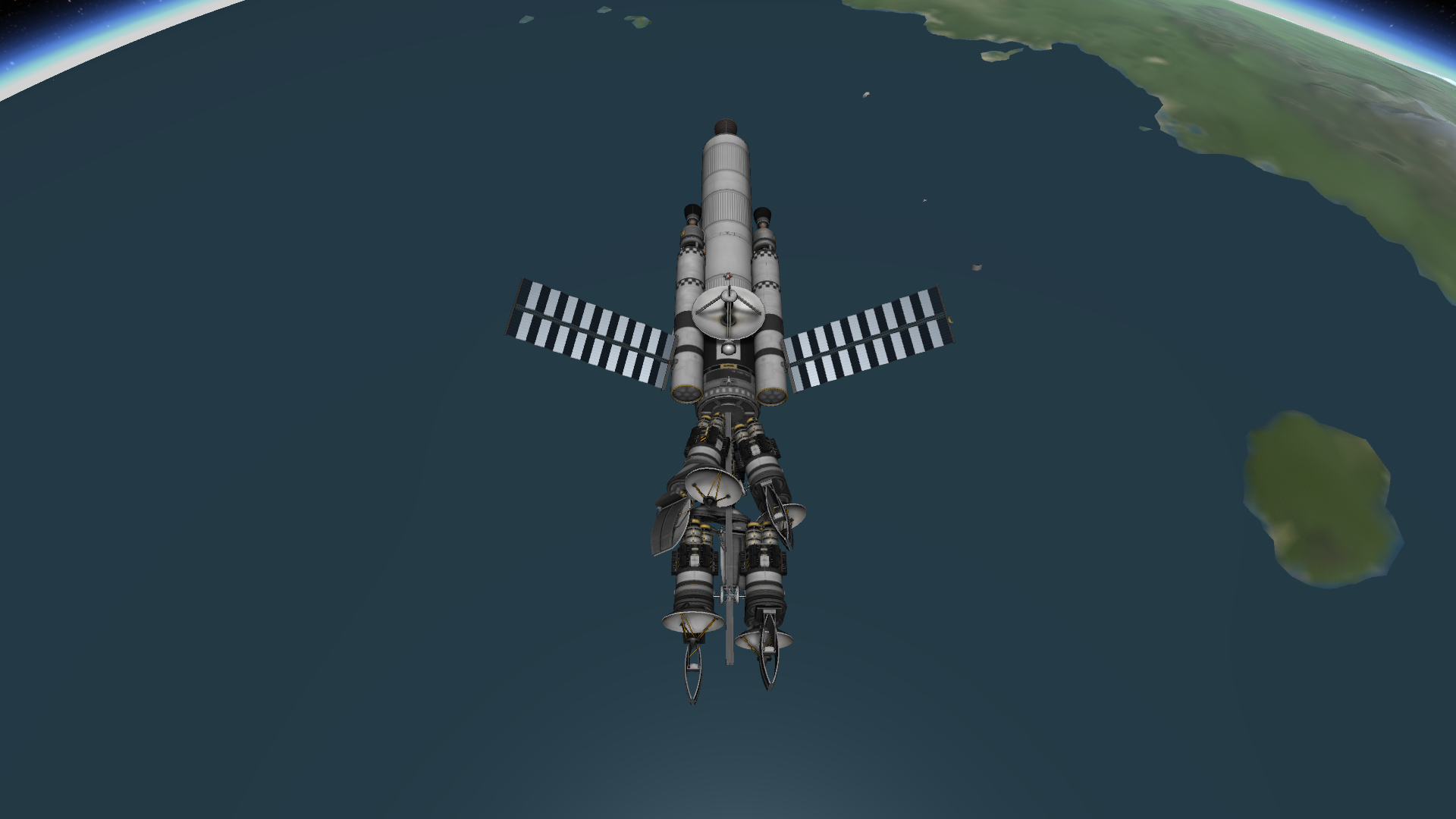
Circularized around Kerbin. It’s now time to plan an intercept with Jool.

In orbit high around Jool. The first satellite is deployed and will plan an intercept with Pol. The second one will go to Bop, third one to Tylo, etc.
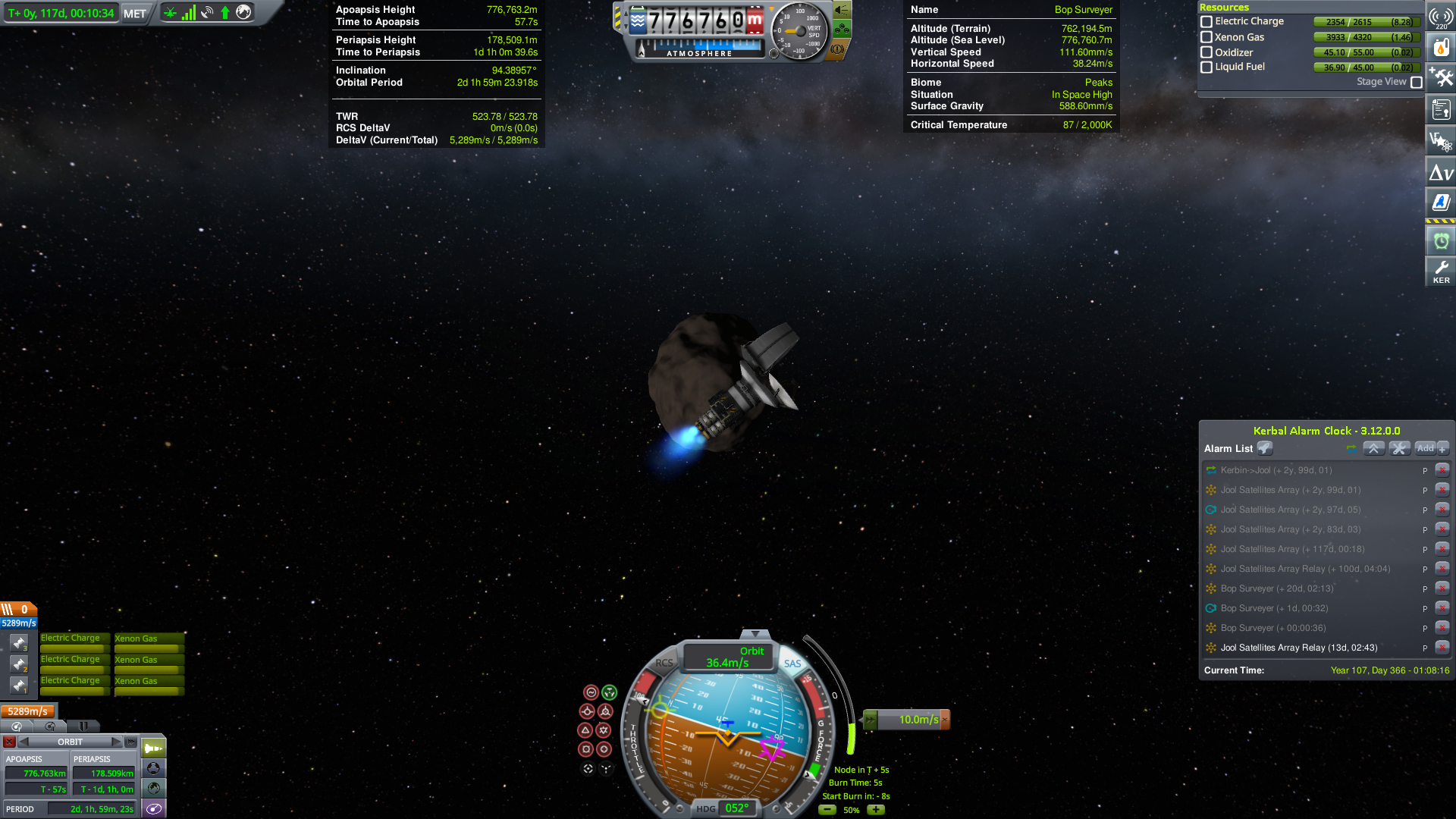
Circularizing and burning towards the normal vector to achieve a polar orbit.
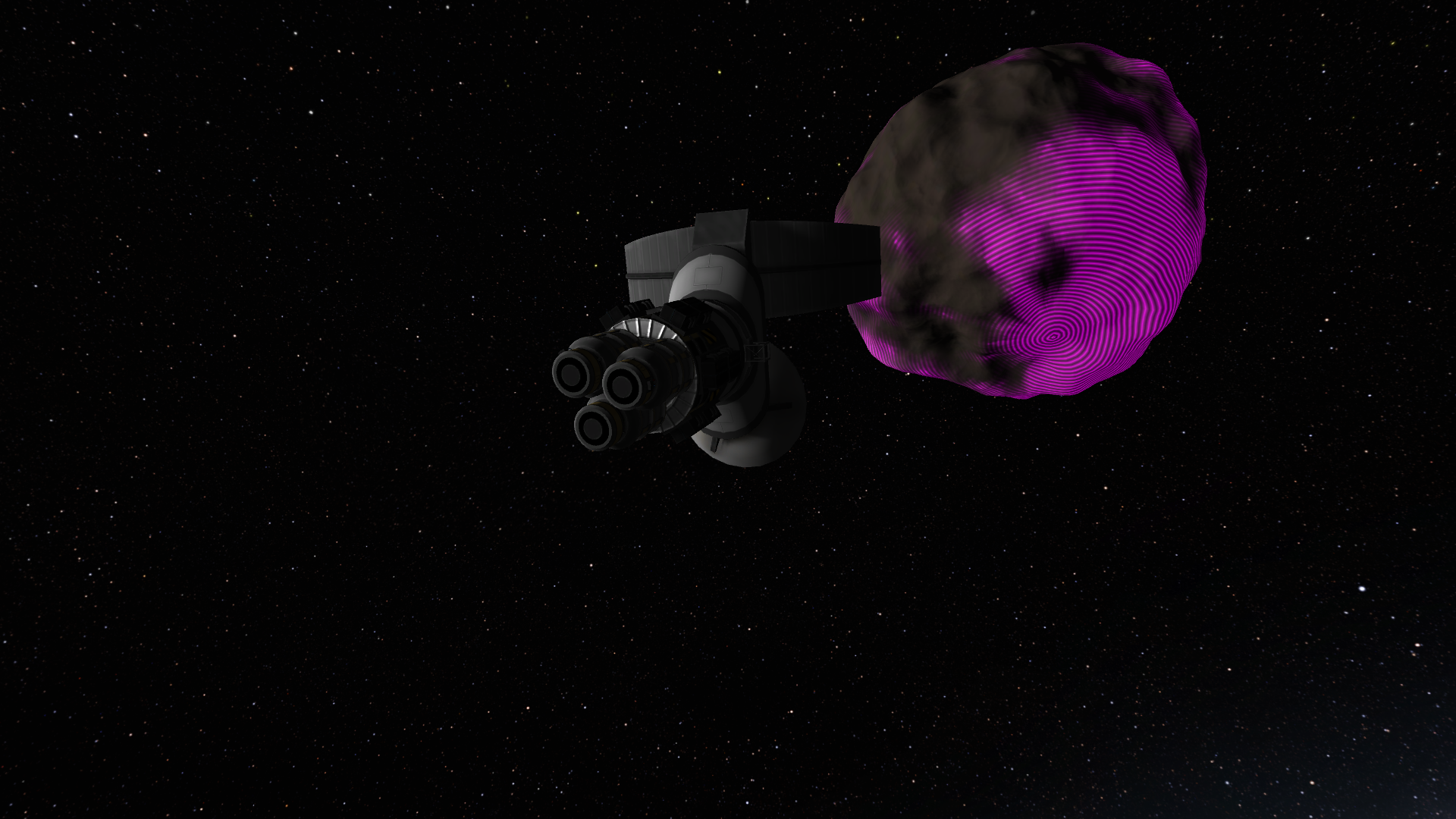
Bop surveyed!

Deploying more satellites.

The ion engines use Xenon and electricity to run.
But we’re really far from Kerbol, our star. The solar panels would not work here. Instead, we’re using fuel cells: they convert fuel to electricity.
The cells are then activate before running out of electricity.
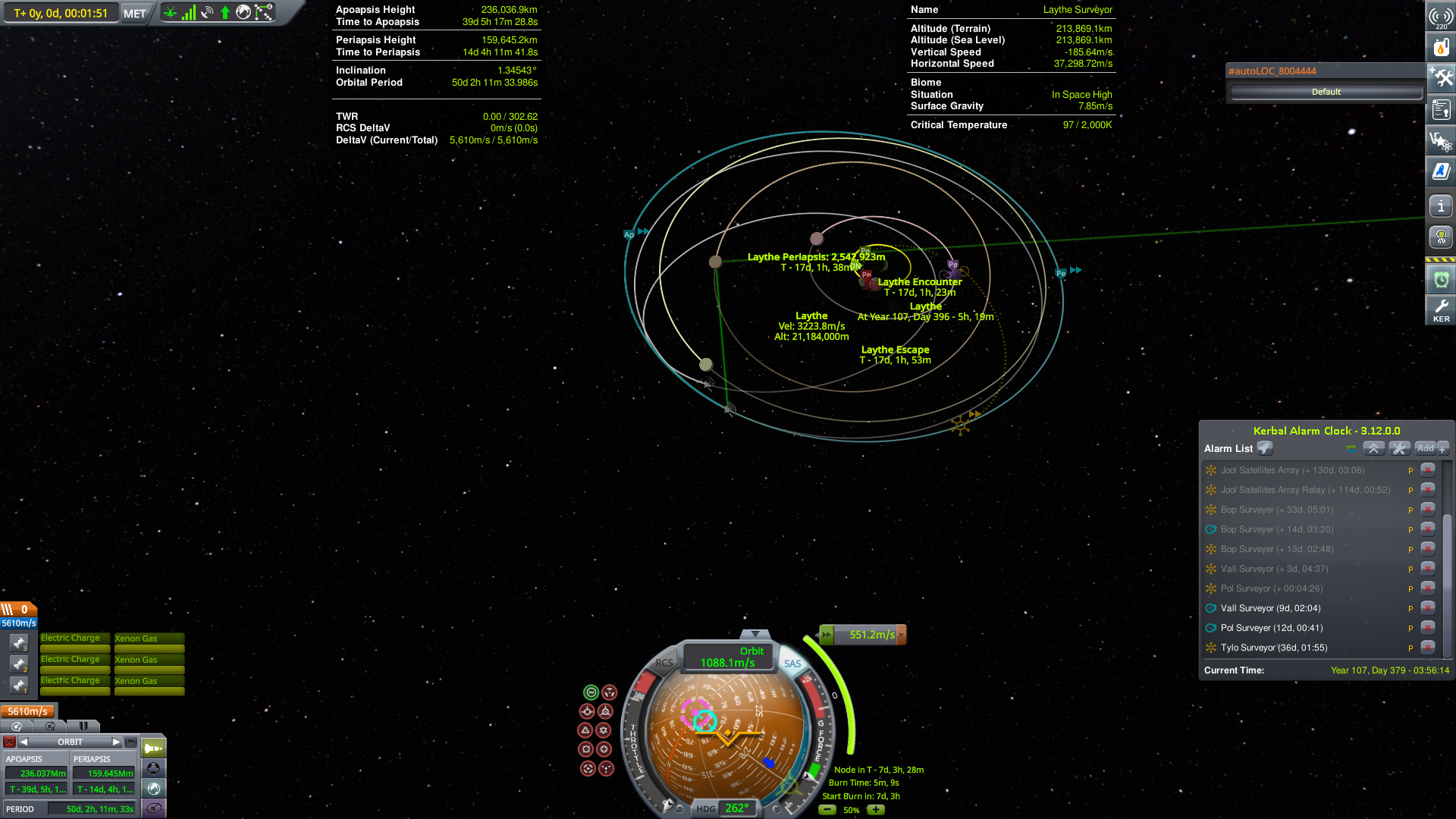
This is an example of maneuver that will put us in an Laythe intercept orbit.

Burning here to circularize around Vall.

After having achieved a polar orbit, we can survey Pol.
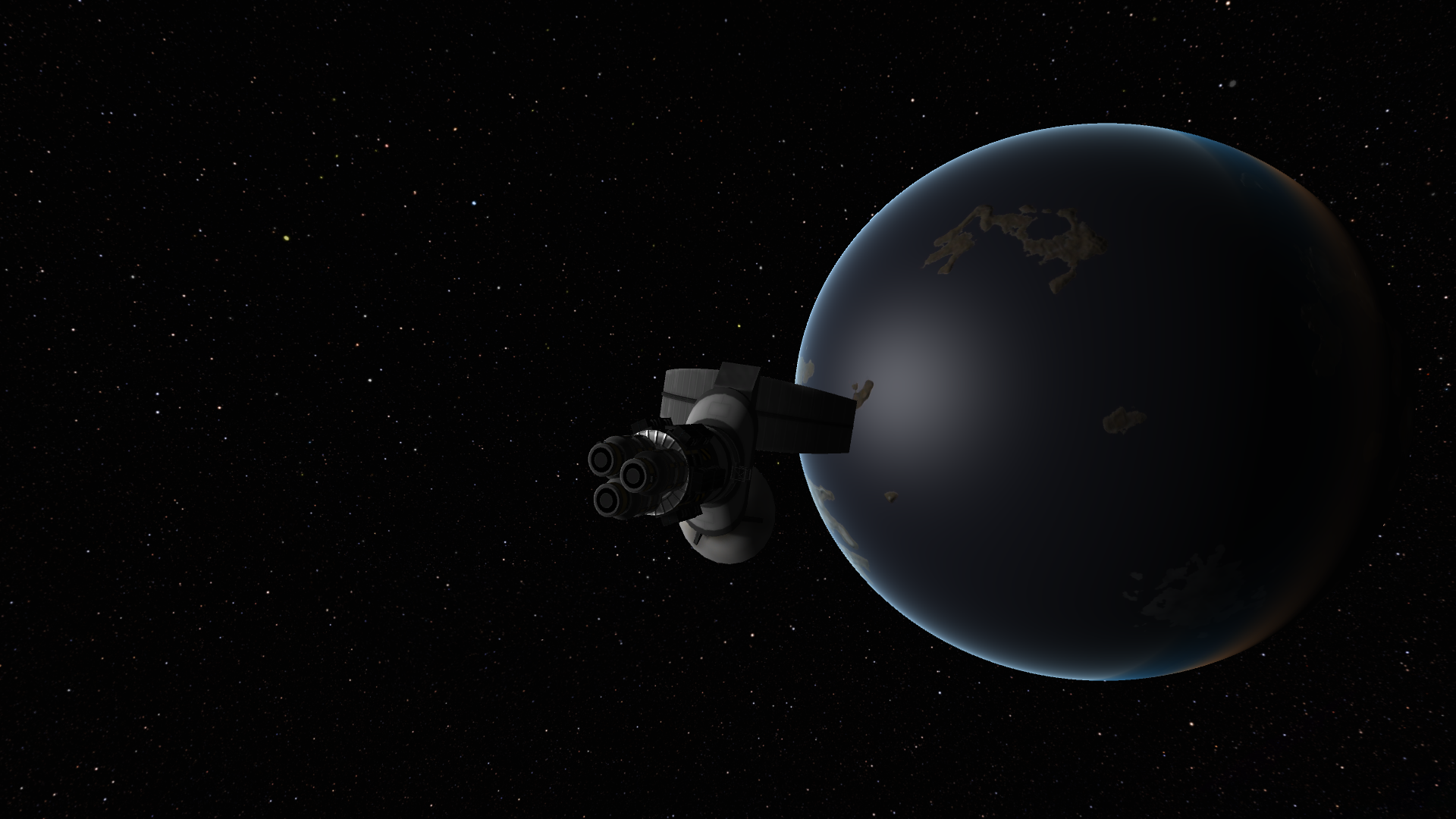
Same for Laythe.

Waiting for the periapsis of Tylo. We’ll burn towards retrogade and normal there.

In orbit around Tylo.

Tylo is now also surveyed. On the top left of the screen you can see the inclination, 90° for a polar orbit. The orbit is circular, around 800km. The surveyor needs an orbit of ~30km to ~1500km to work properly.
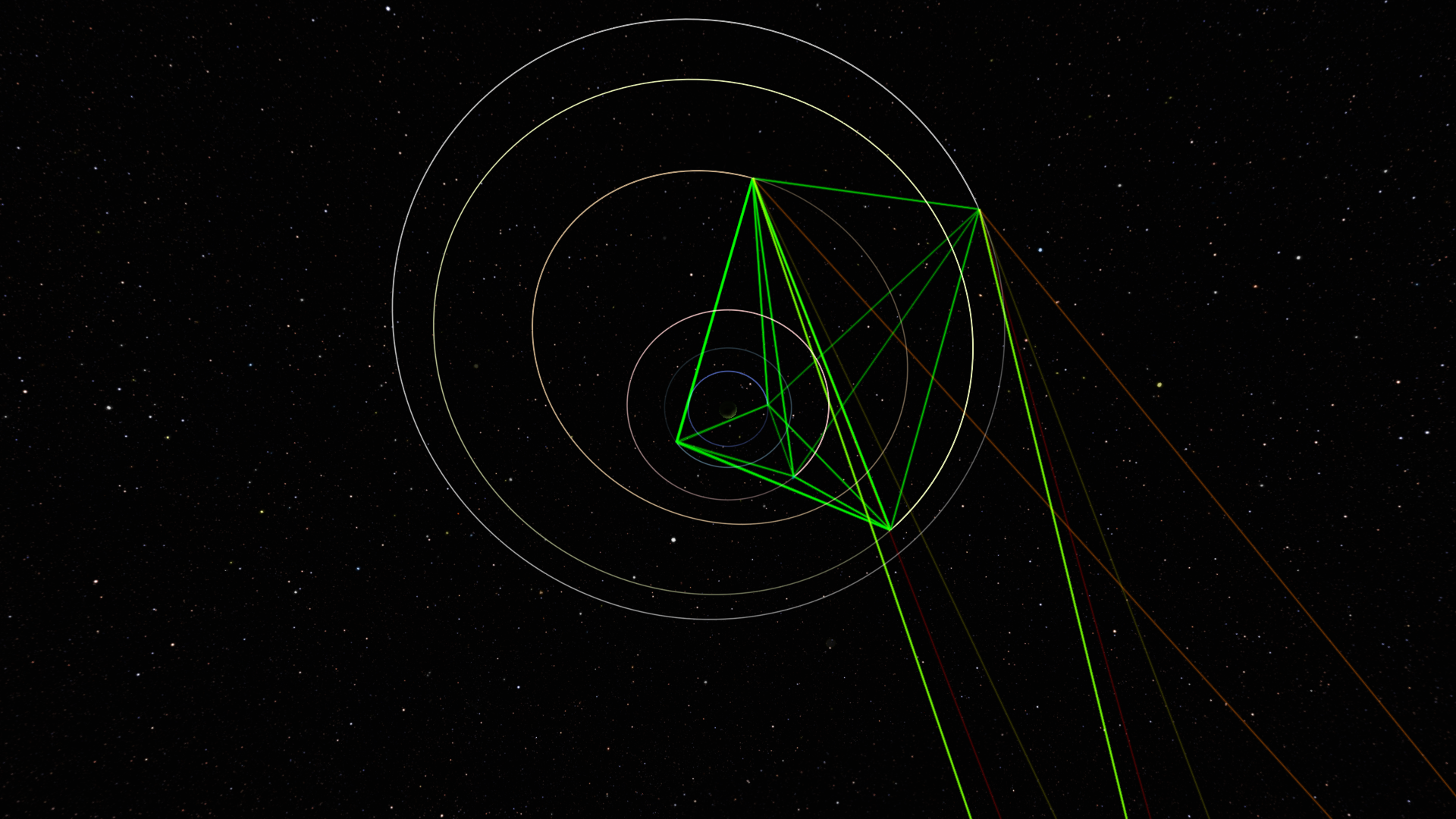
The communication network seems to be working correctly! The small relays around each moon now communicate with the larger one in orbit high around Jool. The relays we put close to Pol, Bop and Vall on previous missions are also helping.